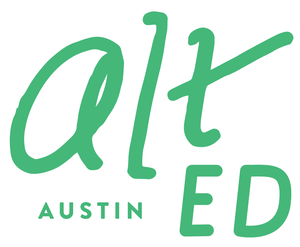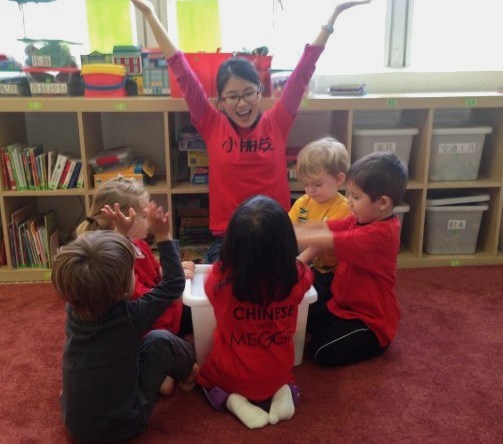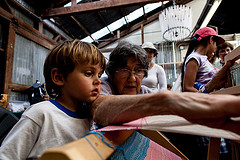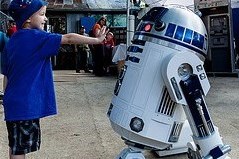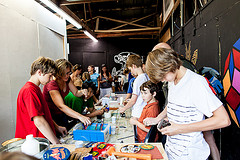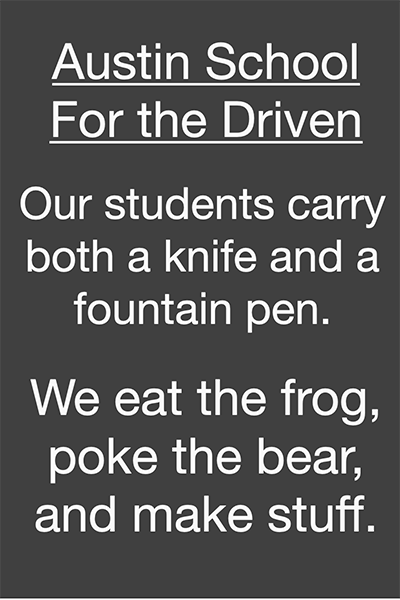Movers and shakers
/Austin’s alt ed community has seen lots of movin’ and shakin’ this summer. Here’s a roundup, in no particular order, of some changes you should know about as you're looking for schooling options for your kiddos.
A new school serving ages 3 to 103 is forming in Central Austin, just south of the river: Integrity Academy at Casa de Luz, Center for Integral Studies. Led by executive director Ali Ronder, formerly of AHB Community School, and founder Eduardo “Wayo” Longoria, the school is currently enrolling (and hiring!) for the 2014–2015 school year. You can help shape the school’s future or just enjoy a stimulating discussion about how humans learn by attending one of Integrity’s weekly salons.
Taking over the helm at AHB is M. Scott Tatum, who brings a wealth of experience in arts education, administration, and integration. Meet Scott and learn what makes this part-time elementary school in Hyde Park special by watching its new series of short videos.
Bronze Doors Academy has a new campus and a new name. According to director and chief motivator Ariel Dochstader Miller, Skybridge Academy will continue the same liberal arts college–like program for junior high and high school students for which Bronze Doors was known, but with some additional STEAM (Science, Technology, Engineering, Art, and Math) opportunities made possible by its new location at the Stunt Ranch in Southwest Austin. As always, both full-time and à la carte options are available.
Accompanying Skybridge in the move to Oak Hill is its elementary school partner, the Soleil School. Cofounder and head of school Carly Borders says the new location on the Stunt Ranch will give her young students access to a ropes course, a pool, and more than 20 acres of beautiful land to explore.
Another unique school on the move this summer is Acton Academy. Construction on its permanent home on Alexander Avenue in East Austin is nearly complete. Laura Sandefer, Acton’s cofounder and head of school, invites you to check it out at the open house on October 24; meanwhile, take a peek at this architect’s rendering. It looks plenty big to house the academy’s current elementary and middle school students as well as the high school program slated to open in 2016.
The Olive Tree Learning Center, a Reggio Emilia–inspired preschool, recently opened its second campus, at 6609 Manchaca Road, near Garrison Park. Like the original Bouldin Creek campus, the new one is currently enrolling children between the ages of 18 months and 5 years. Director Michelle Mattalino says she is “very proud of the staff at both locations” and excited to fill the beautiful campuses with happy children.
Mariposa Montessori is also opening a second campus in South Austin. It will house this American Montessori Society full-member school’s new Lower Elementary program. Head of School Whitney Falcon recently reported that there were a few spots open for fall enrollment.
Progress School is expanding this fall to serve kindergarten through 5th grade. Located in Hyde Park, Progress offers “authentic education for natural learners,” with full- and part-time options as well as an after-school program. More exciting news from director Jennifer Hobbs: “We're getting chickens!”
Likewise, the Inside Outside School has expanded to serve kindergarten through 6th grade this fall, says executive director Deborah Hale. Its current enrollment of 24 will make up three classes—primary, intermediate, and upper elementary—on the school’s seven wooded acres in Pflugerville.
9th Street Schoolhouse is growing, too. The East Side home-based school will serve ages 5 through 9 this fall, with 8 students currently enrolled. 9th Street now has two mentors: founder Caitlin Macklin and Laura Ruiz.
Finally, the Whole Life Learning Center is rolling out a new nature-based one-day program called Mother Earth Mondays, which fosters a connection with the earth through gardening, wilderness survival skills, arts and crafts, games, and other fun activities with mentors Braden Delonay, Caroline Riley Carberry, and Leesalyn Koehler. In addition, director and founder Michael Carberry says he is excited to introduce the newest mentors for the Teen Mentorship Program, Kizzie, Etienne, and Adam, whose bios will soon be posted on the WLLC website alongside those of the school’s veteran staff.
Any questions or comments for these movers and shakers? Feel free to leave them below.
Teri
